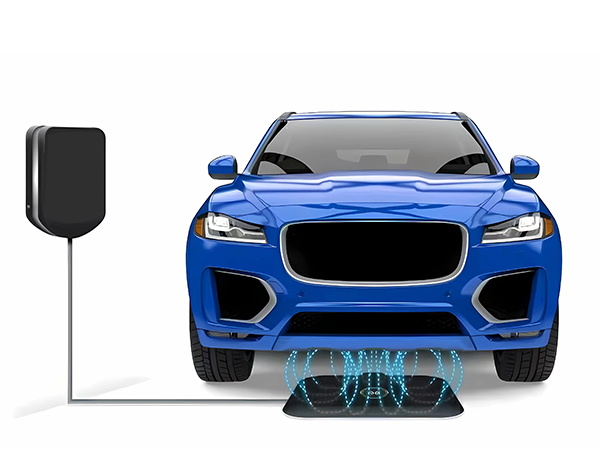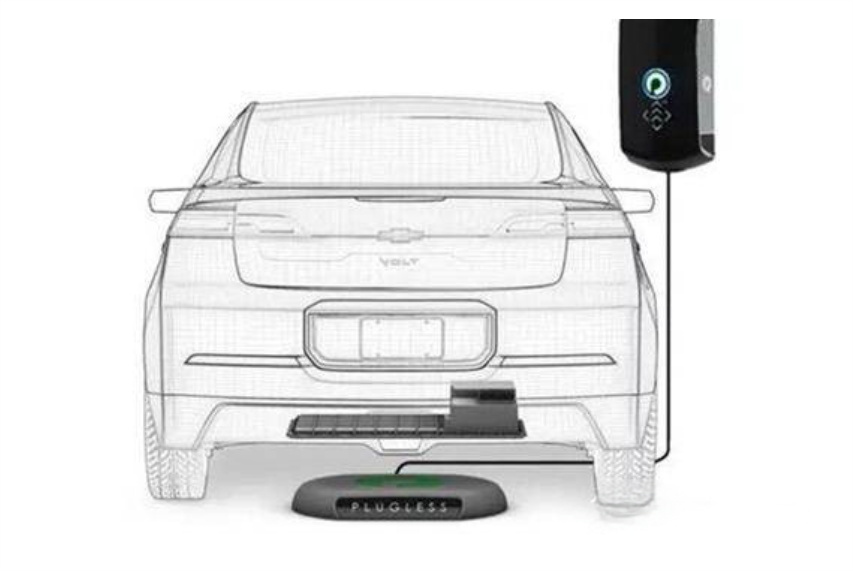
In recent years, the development of new energy vehicles has been rapid, and an increasing number of people are choosing electric vehicles (EVs) as an environmentally friendly mode of transportation. Many automotive manufacturers believe that electric vehicles represent the future direction of the automotive industry, investing heavily in research and development. However, the practical issue of charging has hindered widespread adoption.
The most critical components of electric vehicles are their batteries and charging stations. Due to technical limitations, lithium batteries are currently the only option for a short time, making wireless inductive charging stations a key focus of research. Compared to wired charging stations, wireless charging has several advantages that align with the future development trends of new energy vehicles.
Q1: What are the types of wireless charging and their principles?
Common types include inductive charging, resonant charging, and microwave transmission. All of these utilize the principle of electromagnetic induction, which allows for the wireless transfer of energy. The main categories are:
Inductive Charging: This is currently a more mature technology, used in wireless phone chargers and induction cookers. Due to the small space of digital devices and the low power required, the charging distance is short (often requiring contact with the charging pad), but the electromagnetic radiation is relatively low.
Resonant Charging: Developed by MIT, this technology leverages electromagnetic induction combined with resonance to enhance charging efficiency, allowing for a greater distance compared to standard inductive charging. MIT is currently researching miniaturization, which is less challenging for vehicles that are several meters long.
Microwave Transmission: While often featured in science fiction, it is a viable method for wireless power transfer. However, it has not been widely implemented due to limitations like transmission power. The main advantage of microwave transmission is its long-distance capability, enabling energy transfer even between spacecraft and the ground, with potential for directed transmission.
Q2: What are the benefits of wireless charging?
Despite the slow adoption of wireless charging stations, numerous advantages have already emerged, including high safety, convenience, and ease of installation. Wireless charging stations can be installed in a decentralized manner, reducing pressure on the power grid and allowing electric vehicles to charge without needing to be in a fixed location.
Additionally, standardizing hardware is easier for wireless charging, as it is more challenging to convince manufacturers to unify wired charging interfaces. This is evident in the smartphone industry, where chargers vary greatly, while wireless charger standards are more limited.
Q3: What challenges remain to be addressed?
A. Efficiency and Electromagnetic Compatibility
Energy transfer efficiency and electromagnetic compatibility are significant engineering challenges. Efficiency is a concern for all wireless charging technologies, especially for high-power devices like electric vehicles. The energy conversion process—first to radio waves and then back to electricity—involves losses that could contradict the eco-friendly ethos of electric vehicles.

Electromagnetic compatibility is another critical issue. High-power wireless charging devices can produce electromagnetic leakage that may affect surrounding biological and electronic systems, raising health concerns. Addressing these issues is essential for the engineering viability of wireless charging. Testing for electromagnetic compatibility is necessary during automotive product development, and wireless charging technologies demand even higher standards.
B. Electrical Standards and Radiation Concerns
Wireless charging also faces challenges regarding electrical standards, and there are concerns about electromagnetic radiation. Some consumers are skeptical of the safety of wireless charging. However, companies have reported that their wireless charging systems have passed EMF radiation tests, showing levels significantly below the safety limits established by the International Commission on Non-Ionizing Radiation Protection.
Current Status of Wireless Charging Technology for Electric Vehicles
In May 2017, SAE published standards for electric vehicle wireless charging, sparking widespread discussion in the new energy vehicle industry. After extensive preparation and foundational research, China began developing its own wireless charging standards. The China Electric Power Enterprise Union held a meeting to kick off the national standards for electric vehicle wireless charging, involving leading firms in the wireless charging technology sector. These standards will guide industry management and promote the adoption of wireless charging.
Global Automotive Industry Initiatives
Internationally, brands like Tesla, Volvo, Audi, BMW, and Mercedes-Benz have started developing or testing wireless charging systems for their electric vehicles. Various companies in the communications and IT sectors are also exploring wireless charging for electric vehicles.
Tesla: Tesla is working with Evatran to develop a wireless charging system called PluglessPower for its Model S, which can deliver up to 7.2 kW of power, adding 32 kilometers of range per hour of charging.

Volvo: Volvo has explored utilizing roadways for wireless charging. In Sweden, it collaborates with Alstom and the Swedish Energy Agency to test road-embedded power lines that can charge electric vehicles while in motion.
Qualcomm: In April 2015, Qualcomm showcased its Halo wireless charging technology at the Formula E racing series, demonstrating that wireless charging for electric vehicles can achieve efficiencies similar to wired charging.
Byd --WAVE wireless charging pad :Byd applied for a non-contact induction charger patent as early as December 2005. In July 2014, it sold the University of Utah a 40-foot all-electric bus equipped with the latest WAVE wireless charging pad.

Wireless charging technology, as a convenient and innovative charging solution, is expected to be increasingly adopted in electric vehicles, while the popularity of electric vehicles opens new market opportunities for wireless charging technology. In the short term, challenges such as consumer concerns about radiation safety and the exploration of viable business models need to be addressed. However, wireless charging’s inherent convenience suggests a promising future.